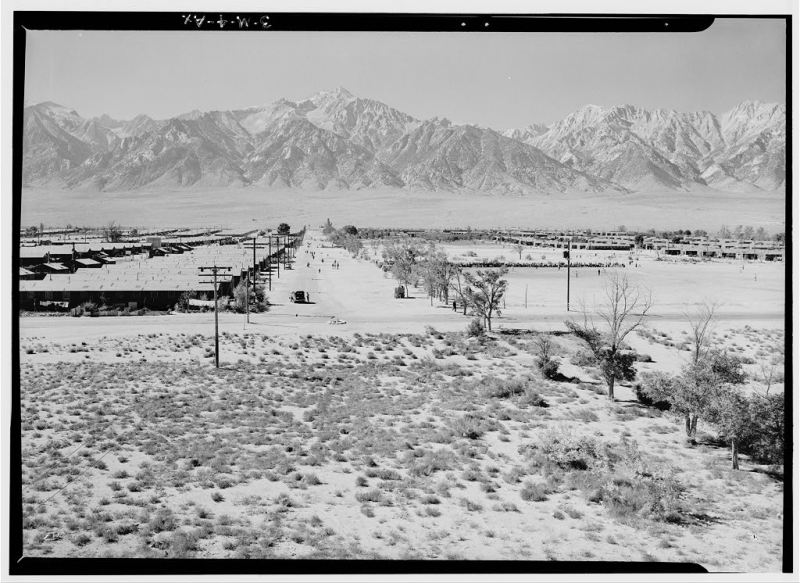Two articles over the past month introduced me to a collection of photographs that Ansel Adams donated to the Library of Congress documenting life at Manzanar, one of the internment camps used by the U.S. government during WW2 to imprison Japanese Americans. The first was in the Seattle Times highlighting an exhibit by the Bainbridge Island Historical Museum:
“Ansel Adams: A Portrait of Manzanar,” composed mostly of black-and-white photographs taken by the legendary American photographer in late 1943, acknowledges the prejudices and fears that led the U.S. government to confine American citizens and legal immigrants of Japanese ethnicity behind barbed wire.
But its main focus is on the personal experiences of the internees Adams photographed. Adams was given two ground rules when he went to Manzanar: no shots of guard towers and no shots of barbed wire. Yet in the eyes of the people he photographed, many of them staring directly into the camera, you can fathom the twists and turns of the internment-camp experience.
The second was included in the Atlantic’s excellent 20 part photo essay on WW2 this last Sunday which featured several pictures taken by Adams (see the previous parts here).
The entire collection can be viewed on the Library of Congress website along with some background notes by staff.

